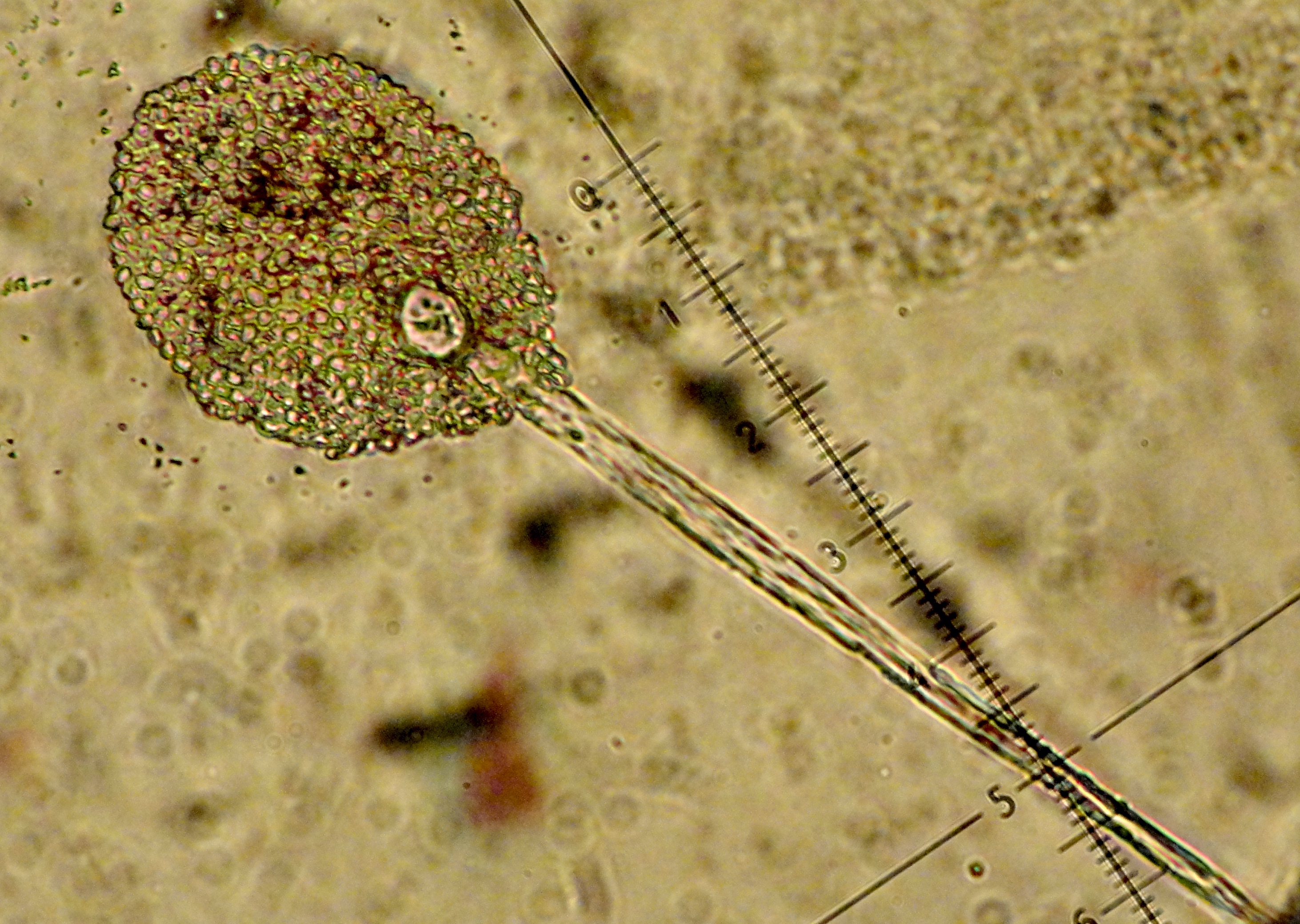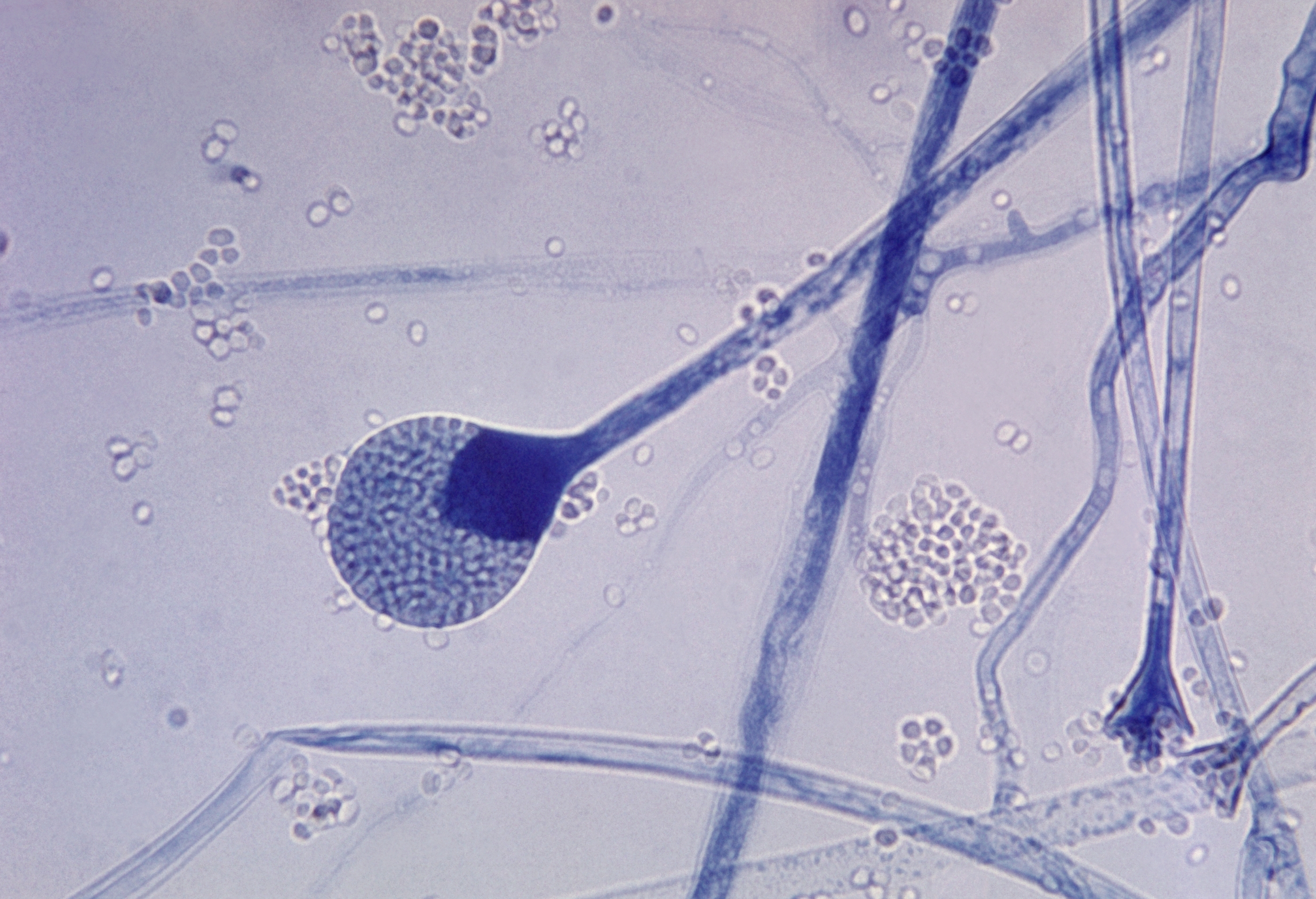|
Megaspore
Megaspores, also called macrospores, are a type of spore that is present in heterosporous plants. These plants have two spore types, megaspores and microspores. Generally speaking, the megaspore, or large spore, germinates into a female gametophyte, which produces egg cells. These are fertilized by sperm produced by the male gametophyte developing from the microspore. Heterosporous plants include seed plants (gymnosperms and flowering plants), water ferns (Salviniales), spikemosses (Selaginellaceae) and quillworts (Isoetaceae). Megasporogenesis In gymnosperms and flowering plants, the megaspore is produced inside the nucellus of the ovule. During megasporogenesis, a diploid precursor cell, the megasporocyte or megaspore mother cell, undergoes meiosis to produce initially four haploid cells (the megaspores). Angiosperms exhibit three patterns of megasporogenesis: monosporic, bisporic, and tetrasporic, also known as the ''Polygonum'' type, the ''Alisma'' type, and the ''Drusa'' ... [...More Info...] [...Related Items...] OR: [Wikipedia] [Google] [Baidu] |
Ovule
In seed plants, the ovule is the structure that gives rise to and contains the female reproductive cells. It consists of three parts: the ''integument'', forming its outer layer, the ''nucellus'' (or remnant of the sporangium, megasporangium), and the female gametophyte (formed from a haploid megaspore) in its center. The female gametophyte — specifically termed a ''megagametophyte'' — is also called the ''embryo sac'' in Flowering plant, angiosperms. The megagametophyte produces an ovum, egg cell for the purpose of fertilization. The ovule is a small structure present in the ovary. It is attached to the placenta by a stalk called a funicle. The funicle provides nourishment to the ovule. On the basis of the relative position of micropyle, body of the ovule, chalaza and funicle, there are six types of ovules. Location within the plant In flowering plants, the ovule is located inside the portion of the flower called the gynoecium. The Ovary (plants), ovary of the gynoecium p ... [...More Info...] [...Related Items...] OR: [Wikipedia] [Google] [Baidu] |
Heterosporous
Heterospory is the production of spores of two different sizes and sexes by the sporophytes of land plants. The smaller of these, the microspore, is male and the larger megaspore is female. Heterospory evolved during the Devonian period from isospory independently in several plant groups: the clubmosses, the ferns including the arborescent horsetails, and progymnosperms. This occurred as part of the process of evolution of the timing of sex differentiation.Sussex, I.M. (1966) The origin and development of heterospory in vascular plants. Chapter 9 in ''Trends in Plant morphogenesis'', ed. by E.G. Cutter, Longmans. Four extant groups of plants are heterosporous; Selaginella, Isoetes, Salviniales and seed plants. Origin of heterospory Heterospory evolved due to natural selection that favoured an increase in propagule size compared with the smaller spores of homosporous plants. Heterosporous plants, similar to anisosporic plants, produce two different sized spores in separa ... [...More Info...] [...Related Items...] OR: [Wikipedia] [Google] [Baidu] |
Gametophyte
A gametophyte () is one of the two alternating multicellular phases in the life cycles of plants and algae. It is a haploid multicellular organism that develops from a haploid spore that has one set of chromosomes. The gametophyte is the sexual phase in the life cycle of plants and algae. It develops sex organs that produce gametes, haploid sex cells that participate in fertilization to form a diploid zygote which has a double set of chromosomes. Cell division of the zygote results in a new diploid multicellular organism, the second stage in the life cycle known as the sporophyte. The sporophyte can produce haploid spores by meiosis that on germination produce a new generation of gametophytes. Algae In some multicellular green algae ('' Ulva lactuca'' is one example), red algae and brown algae, sporophytes and gametophytes may be externally indistinguishable (isomorphic). In ''Ulva'', the gametes are isogamous, all of one size, shape and general morphology. Land plant ... [...More Info...] [...Related Items...] OR: [Wikipedia] [Google] [Baidu] |
Glossary Of Botanical Terms
This glossary of botanical terms is a list of definitions of terms and concepts relevant to botany and plants in general. Terms of plant morphology are included here as well as at the more specific Glossary of plant morphology and Glossary of leaf morphology. For other related terms, see Glossary of phytopathology, Glossary of lichen terms, and List of Latin and Greek words commonly used in systematic names. A B ... [...More Info...] [...Related Items...] OR: [Wikipedia] [Google] [Baidu] |
Spore
In biology, a spore is a unit of sexual reproduction, sexual (in fungi) or asexual reproduction that may be adapted for biological dispersal, dispersal and for survival, often for extended periods of time, in unfavourable conditions. Spores form part of the Biological life cycle, life cycles of many plants, algae, fungus, fungi and protozoa. They were thought to have appeared as early as the mid-late Ordovician period as an adaptation of early land plants. Bacterial spores are not part of a sexual cycle, but are resistant structures used for survival under unfavourable conditions. Myxozoan spores release amoeboid infectious germs ("amoebulae") into their hosts for parasitic infection, but also reproduce within the hosts through the pairing of two nuclei within the plasmodium, which develops from the amoebula. In plants, spores are usually haploid and unicellular and are produced by meiosis in the sporangium of a diploid sporophyte. In some rare cases, a diploid spore is also p ... [...More Info...] [...Related Items...] OR: [Wikipedia] [Google] [Baidu] |
Double Fertilization
Double fertilization or double fertilisation (see spelling differences) is a complex fertilization mechanism of angiosperms. This process involves the fusion of a female gametophyte or megagametophyte, also called the embryonic sac, with two male gametes (sperm). It begins when a pollen grain adheres to the stigmatic surface of the carpel, the female reproductive structure of angiosperm flowers. The pollen grain begins to germinate (unless a type of self-incompatibility that acts in the stigma occurs in that particular species and is activated), forming a pollen tube that penetrates and extends down through the style toward the ovary as it follows chemical signals released by the egg. The tip of the pollen tube then enters the ovary by penetrating through the micropyle opening in the ovule, and releases two sperm into the embryonic sac (megagametophyte). The mature embryonic sac of an unfertilized ovule is 7-cellular and 8-nucleate. It is arranged in the form of 3+1+3 (from ... [...More Info...] [...Related Items...] OR: [Wikipedia] [Google] [Baidu] |
Microspore
Microspores are land plant spores that develop into male gametophytes, whereas megaspores develop into female gametophytes. The male gametophyte gives rise to sperm cells, which are used for fertilization of an egg cell to form a zygote. Megaspores are structures that are part of the alternation of generations in many seedless vascular cryptogams, all gymnosperms and all angiosperms. Plants with heterospory, heterosporous life cycles using microspores and megaspores arose independently in several plant groups during the Devonian period. Microspores are haploid, and are produced from diploid microsporocytes by meiosis. Morphology The microspore has three different types of wall layers. The outer layer is called the perispore, the next is the exospore, and the inner layer is the endospore. The perispore is the thickest of the three layers while the exospore and endospore are relatively equal in width. Seedless vascular plants In heterosporous seedless vascular plants, modified ... [...More Info...] [...Related Items...] OR: [Wikipedia] [Google] [Baidu] |
Megasporangium
A sporangium (from Late Latin, ; : sporangia) is an enclosure in which spores are formed. It can be composed of a single cell or can be multicellular. Virtually all plants, fungi, and many other groups form sporangia at some point in their life cycle. Sporangia can produce spores by mitosis, but in land plants and many fungi, sporangia produce genetically distinct haploid spores by meiosis. It's outdated name, sporange, is one of the few perfect rhymes for orange. Fungi In some phyla of fungi, the sporangium plays a role in asexual reproduction, and may play an indirect role in sexual reproduction. The sporangium forms on the sporangiophore and contains haploid nuclei and cytoplasm. Spores are formed in the sporangiophore by encasing each haploid nucleus and cytoplasm in a tough outer membrane. During asexual reproduction, these spores are dispersed via wind and germinate into haploid hyphae. Although sexual reproduction in fungi varies between phyla, for some fungi the ... [...More Info...] [...Related Items...] OR: [Wikipedia] [Google] [Baidu] |
Selaginella Heterospores
''Selaginella'', also known as spikemosses or lesser clubmosses, is a genus of lycophyte. It is usually treated as the only genus in the family Selaginellaceae, with over 750 known species. This family is distinguished from Lycopodiaceae (the clubmosses) by having scale-leaves bearing a ligule and by having spores of two types. They are sometimes included in an informal paraphyletic group called the "fern allies". The species '' S. moellendorffii'' is an important model organism. Its genome has been sequenced by the United States Department of Energy's Joint Genome Institute. The name ''Selaginella'' was erected by Palisot de Beauvois solely for the species '' Selaginella selaginoides'', which turns out (with the closely related '' Selaginella deflexa'') to be a clade that is sister to all other ''Selaginellas'', so any definitive subdivision of the species into separate genera leaves two taxa in ''Selaginella'', with the hundreds of other species in new or resurrected gener ... [...More Info...] [...Related Items...] OR: [Wikipedia] [Google] [Baidu] |







